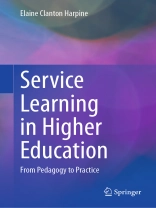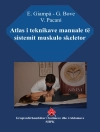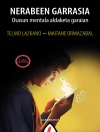This practical guide assists university faculty in developing and implementing service-learning courses and projects across multiple disciplines. It examines how embedding academic service-learning projects into the core curricula benefits not only the students, but also their universities and communities. The book describes ways in which service learning becomes a powerful teaching method using step-by-step explanations, real-world examples, and instructor checklists and handouts. Chapters detail how to integrate academic service-learning projects into classroom pedagogy and evaluate student experience.
Key areas of coverage include:
- Strategies for ensuring that students engage with academic service-learning projects from the initial stages through completion.
- Guidance on embedding an academic service-learning curriculum into traditional coursework to supplement students’ textbook knowledge and classroom experiences to address real-world problems in the community.
- Research confirming the ways in which students learn more and score higher on end-of-the-semester tests when courses incorporate academic service-learning projects.
- Steps to incorporate service-learning projects across various disciplines and coursework to enrich student learning and produce positive outcomes for universities and communities.
Service Learning in Higher Education is an essential resource for professors and graduate students as well as teachers and educational professionals in such varied fields as school and clinical child psychology, educational psychology, social work, pedagogy, educational practice and policy, sociology, anthropology, and all related disciplines.
สารบัญ
Chapter 1. Yes, I Want to Use Academic Service-Learning. Where Do I Begin?.- Chapter 2. The Advantages of Using Academic Service-Learning in a University Classroom What Does the Research Say?.- Chapter 3. Why Is It Important to Select the Right Service-Learning Project?.- Chapter 4. How Does Academic Service-Learning Help Students Learn in the Classroom and from the Textbook?.- Chapter 5. Creating an Intrinsically Motivating Learning Environment: Promoting Student Engagement and Intrinsic Motivation.- Chapter 6. Building an Academic Service-Learning Pedagogy How Can a Course Incorporate Academic Service-Learning?.- Chapter 7. Designing an Academic Service-Learning Course How Can Faculty Members Measure Learning and Student Reflection?.- Chapter 8. What Should an Academic Service-Learning Syllabus Include?.- Chapter 9. Applying the Principles of Change What Type of Leadership Should I Provide?.- Chapter 10. What Impact Will the Academic Service-Learning Project Have on the Community? How Can I Best Prepare my Students to Work at an Off-Campus Community Setting?.
เกี่ยวกับผู้แต่ง
Elaine Clanton Harpine, Ph.D., is a motivational psychologist specializing in group-centered prevention. She has designed programs for children and youth for 50 years. Her programs include Camp Sharigan, the Reading Orienteering Club after-school program, and Vowel Clustering. She received the 2022 Albert Nelson Marquis Lifetime Achievement Award for her work with inner city children and youth. Dr. Clanton Harpine earned her doctorate in Educational Psychology, Counseling from the University of Illinois, Urbana-Champaign. She has published 19 nonfiction books and received two book awards. In addition, she has used service learning for more than 20 years at the University of South Carolina Aiken, where she taught Lifespan Development, Group Therapy and Counseling, and Human Growth and Development; and at Kent State University Geauga and Kent State University Stark, where she taught Psychology of Motivation and Psychology of Adjustment. One of her recent publications is After-School Programming and Intrinsic Motivation (2019, Springer). She is listed in Who’s Who of American Women, 2006-2022, for her work with at-risk students.












